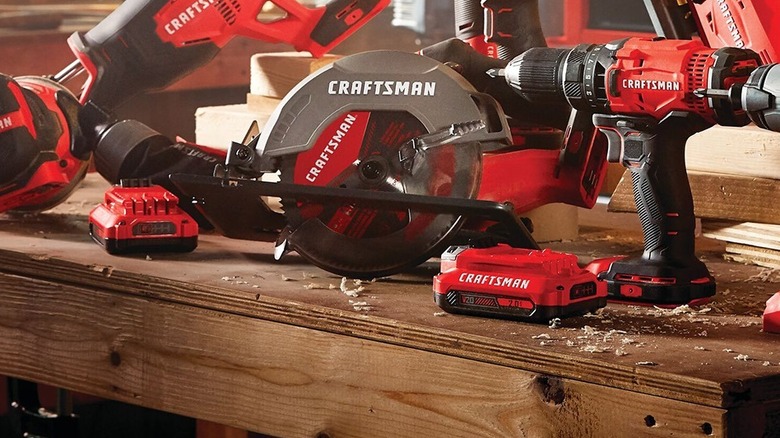How Much Juice Do Power Tool Batteries Lose When You're Not Using Them?
We may receive a commission on purchases made from links.
After months of putting off that DIY home improvement project, you finally get around to it. You don your safety gear, lay out the materials, and grab your cordless power tool combo kits from their dusty shelf. But just as you get ready to work, you realize that the power tool battery that you stored fully charged about a year ago is now nearly drained.
It's easy to think that if a battery isn't being used, then it shouldn't discharge at all. But you might be surprised that rechargeable power tool batteries actually deplete even when you're not actively using them. This is because of the so-called self-discharge. All batteries self-discharge — it's simply in their nature. Chances are you just don't realize it since some discharge much slower than the others. For instance, disposable household batteries like your double and triple As will remain almost as good as new even after years in storage.
The same can't be said for NiCd and Li-ion batteries, though, two of the most common battery types for cordless power tools. But just how much juice do these power tool batteries lose when not in use?
How quickly power tool batteries discharge when you're not using them
Different battery materials have different self-discharge rates. If you're using a nickel-cadmium (NiCd) battery for your power tool, you should know that it loses its charge pretty fast in the first few days. It will be down by 15 to 20% after the 24 hours in storage and 7 to 10% the day after. Then, for the next succeeding days, it will lose 1% every day.
On the other hand, most lithium-ion (Li-ion) batteries from major power tool brands like DeWalt, Milwaukee, and Ryobi can last for months with the same charge level. That's because of their super slow self-discharge rate, usually about 1.5 to 2% per month. However, there are some manufacturers like EGO that designed their Li-ion batteries to drop to 30% after not being used for 30 days. It then loses 1% of its capacity every year until it over discharges and is no longer usable.
How to properly store your power tool batteries when not in use
Lithium-ion batteries are expected to last from two to three years before you need to replace them. NiCd are good for up to 200 full charge cycles. To make the most out of your power tool battery's lifespan, you need to store them properly if you don't plan on using them for weeks and maybe even months.
First off, manufacturers recommend unplugging the battery from the tool and partially charging it to anywhere between 40 to 80% if it's a Li-ion and fully charged if it's a Ni-Cd. Never store a fully drained battery as it could lose its capacity when left without charge for prolonged periods. Once you reach your desired charged level, take the battery out of the charger, especially if the charger itself isn't connected to a wall outlet. This ensures your battery won't be depleted by unwanted vampire drain.
In terms of the storage conditions, it's best to stay within the ambient temperature range of 50 to 80°F (10 to 26°C). Keeping the battery in extreme temperatures is one of the worst mistakes that are ruining your power tool batteries — it may permanently lose its capacity. That said, your storage location should be away from direct sunlight at all times. If the battery will remain untouched for more than six months, make sure to recharge it every six to twelve months to replenish the lost charge.


